#German manuscripts
Text


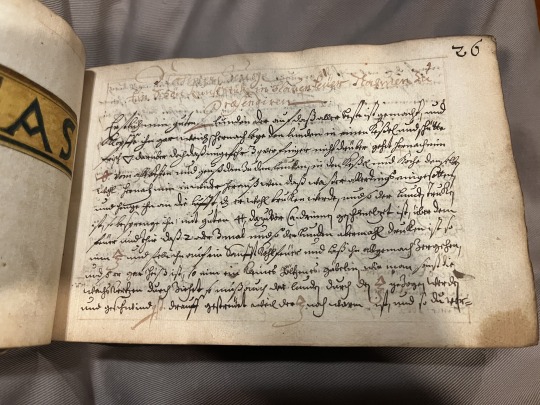
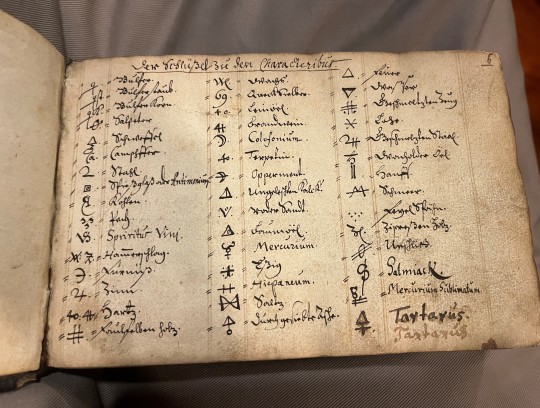
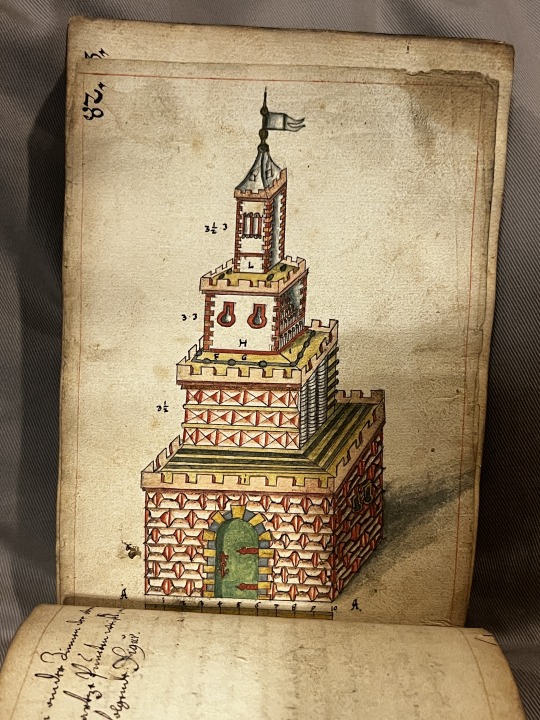

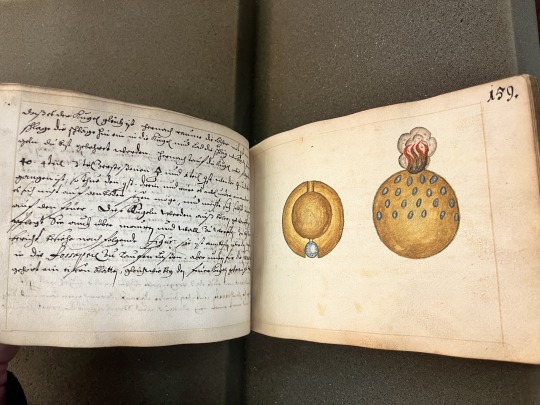

This is an amazing German manuscript from circa 1671. It's called Kunst Buch von allerhandt rahren undt schönen inventionen so wohl in der Feuerwerckerey Kunst als auch in der Büchsenmeisterey zusammen and was written by Andreas Räbel, a pyrotechnician.
An original work of a 17th century pyrotechnician, with the formulas he used to make fireworks. This is a manual how to make and use them, in which the author betrays secret recipes for the construction of rockets, flares, bombs. Ingredients are specified: camper, antimony, coal, tin, orpiment, chalk, tree oil, mercury, line oil, brandy, ammonium, arcanuni, chlroide, resin, and a host of other untranslatable elements. The fireworks that Räbel describes come in all forms and shapes. Descriptions follow for the construction of rocket posts, launchers, and fixtures to be mounted on buildings, small castles, and castles. Shown in finely colored pen drawings, labeled with reference numbers and letters and provided with a scale. Detonators are describes, small bombs, smoke-balls, balls of light, fireballs, storm-balls, big guns, fireworks and hundreds of other instructions. He also narrates the memorable wedding of Emperor Leopold von Habsburg with Margarita Theresa of Spain on December 12, 1666.
#rare books#rare book#manuscripts#german manuscripts#german texts#alchemy#fireworks#balls of light#fireballs#firework displays#hand painted#hand colored#pyrotechnics#othmeralia
154 notes
·
View notes
Text

January calendar page with Janus and Capricorn, from the Stammheim Missal
German, probably 1170s
tempera colors, gold leaf, silver leaf, and ink
J. Paul Getty Museum
#January#Janus#Capricorn#manuscript#medieval manuscript#Stammheim Missal#German#book#codex#Getty Museum#J. Paul Getty Museum
489 notes
·
View notes
Text
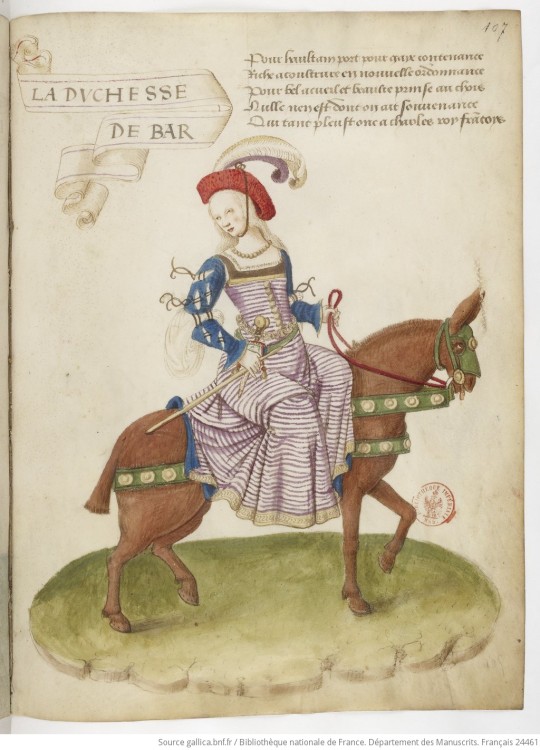


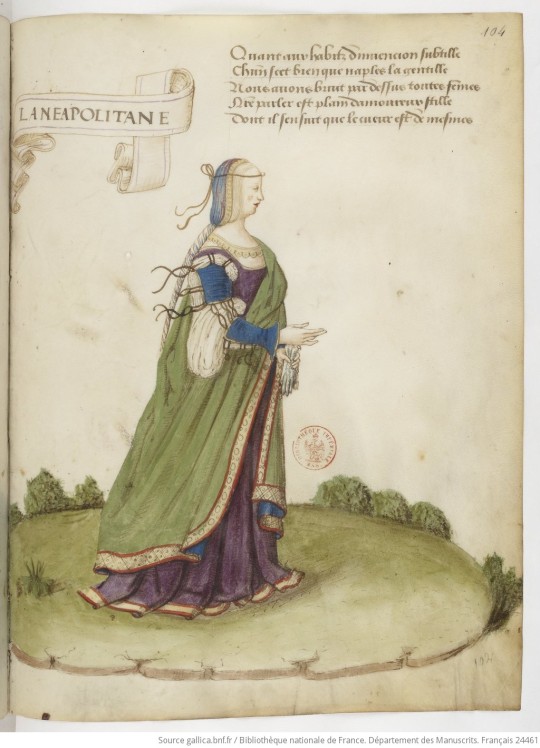


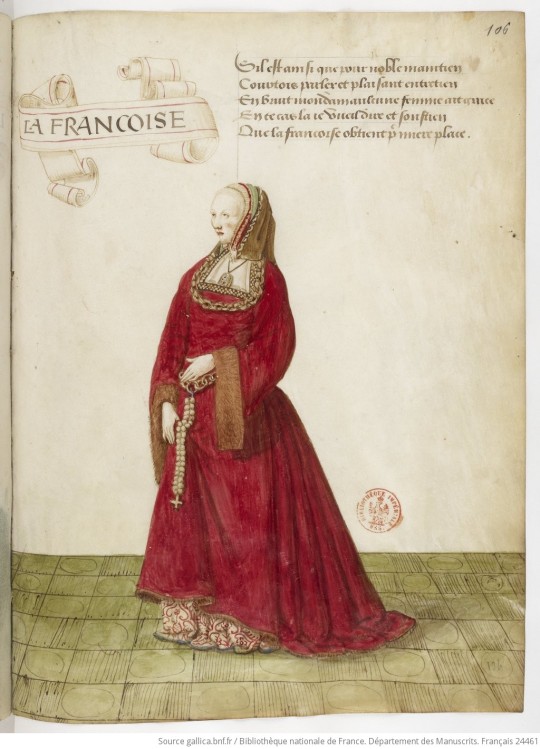


Collection of drawings accompanied by texts, known as Recueil Robertet, 1490-1520 France;
The Duchess of Bar
Women from Lombardy and Venice
Women from Naples and Florence
Women from Germany and France
Green and Yellow; White and Blue
#late 15th century#early 16th century#renaissance#manuscript#illuminated manuscript#illustrated manuscript#16th century#15th century#mdp16th c.#mdp15th c.#France#15th c. France#16th c. France#italy#costume illustration#illustration#15th c. italy#16th c. Italy#costume book#German Style#Germany#15th c. Germany#16th c. Germany#horseback#riding
148 notes
·
View notes
Text
Guda: a medieval self-portrait
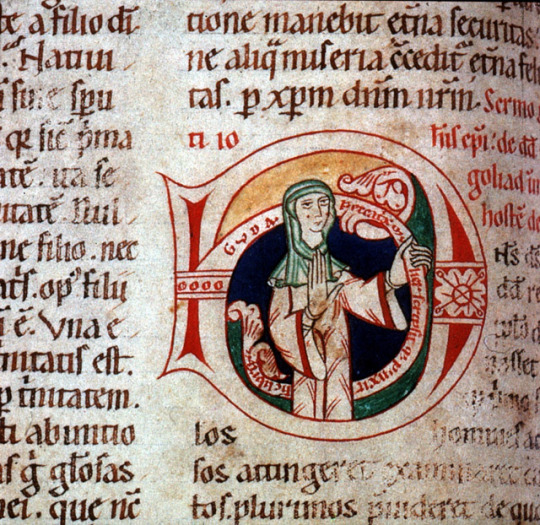
Self-portrait of Guda, homilary, Frankfurt, second half of 12th century.
"The first category of figures we have considered shows the artist present in the work or in the process of creating it. To that category, we add a second type of portrait or self-portrait, in which the artist beseeches a favorable judgment for him-/herself after the work is completed.
Such is the case with the famous signed self-portrait of Guda, who represents herself within a collection of homilies in an initial D[ominus] for the octave of the Pentecost. The inscription reads: “guda peccatrix mulier scripsit q[ue] pinxit h[un]c librum (Guda, a sinful woman, wrote and painted this book).” Of the seven initials in the manuscript, this D is one of only two that contain figures. The other historiated initial comes at folio 196, the opening of the Assumptio Mariae, and contains a portrait of the virgin identified as Maria Virgo. The other five initials display dragons, interlaces, ribbons, or spirals.
Guda represented herself firmly grasping the initial with her left hand and raising her right in a gesture of salutation and expectation. I would argue that Guda carefully and consciously chose to be here. The initial opens the ninth homily of St. John chrysostom, the Sermo beati iohannes episcopi de david ubi goliad immanem hostem devicit (Sermon of the blessed Bishop John, on when David overcame the monstrous enemy Goliath), which explains the election of David. The homily also offers an occasion to meditate on the gifts of the Holy Spirit and its role in comforting the soul. In short, Guda has chosen the perfect spot in which to await the Second Coming of Christ, and this is why she represents herself as a sinner, whose activity as an artist should count in her favor at the end of time.
Guda’s self-representation in this way is analogous to the scene the scribe Swicher has staged (for the reader?) in the frontispiece of his copy of isidore of Seville’s Etymologies. Swicher’s author portrait is most original. In the upper register, Isidore of Seville is depicted in conversation with Bishop Braulio of Zaragoza, the patron of the Etymologies. In the lower register, Christ in propria persona presides at the scribe’s last judgment. Two angels busy themselves at a balance in which is weighed the very manuscript Swicher copied. The work of the scribe counts as a work of virtue: a third angel takes Swicher’s soul away through a thick cloud, whereas the devil turns around empty-handed. The Titulus attests to this: "O god, deign to have mercy on this wretched scribe. Do not consider the weight of my faults. Small though the good things may be, let them be exalted over the bad. Let night give way to light; let death itself give ground to life.”
Guda and Swicher make use of the same patterns of visibility and those patterns are not gender-specific. In both cases, the artists stage their humility and represent their belief that they might reach the heavenly kingdom through the artistic work they have done."
Mariaux Pierre Alain, "Women in the making: early medieval Signatures and artists’ portraits (9th–12th c.)", in: Reassessing the Roles of Women as 'makers' of Medieval Art and Architecture
#history#women in history#women's history#12th century#germany#german history#middle ages#medieval history#medieval women#women's history month#women painters#female artists#educational#herstory#illuminations#marginalias#manuscripts#medievalism#guda
176 notes
·
View notes
Text
Highlight reel from LJS 463, a compilation of German texts concerning astrology and medicine beginning with a calendar for the diocese of Constance, combining liturgical and medical information. It was featured on #CoffeeWithACodex in December 2023, you can watch the full 30-minute recording at the link.
🔗:
#medieval#manuscript#medieval manuscript#15th century#germany#german#astrology#medicine#medicine & astrology two great tastes that taste great together#illustration#theory of the temperaments
129 notes
·
View notes
Note
Where do you find these manuscripts? Is it like a website or do you find it randomly??
hey, thanks for the curiosity! lenghty answer below the cut :)
1)
medieval manuscripts are typically owned by libraries and showcased on the library's websites. so one thing i do is i randomly browse those digitized manuscript collections (like the collections of the bavarian state library or the bodleian libraries, to name just two), which everybody can do for free without any special access. some digital collections provide more useful tools than others (like search functions, filters, annotations on each manuscript). if they don't, the process of wading through numerous non-illustrated manuscripts before i find an illustrated one at all can be quite tedious.
2)
there are databases which help to navigate the vast sea of manuscripts. the one i couldn't live without personally use the most is called KdIH (Katalog der deutschsprachigen illustrierten Handschriften des Mittelalters). it's a project which aims to list all illustrated medieval manuscripts written in german dialects. the KdIH provides descriptions of the contents of each manuscript (with a focus on the illustrations), and if there's a digital reproduction of a manuscript available anywhere, the KdIH usually links to it. the KdIH is an invaluable tool for me because of its focus on illustrated manuscripts, because of the informations it provides for each manuscript, and because of its useful search function (once you've gotten over the initial confusion of how to navigate the website). the downside is that it includes only german manuscripts, which is one of the main reasons for the over-representation of german manuscripts on my blog (sorry about that).
3)
another important database for german manuscripts in general (i.e. not just illustrated ones) is the handschriftencensus, which catalogues information regarding the entirety of german language manuscripts of the middle ages, and also links to the digital reproductions of each manuscript.
4)
then there are simply considerable snowball effects. if you do even just superficial research on any medieval topic at all (say, if you open the wikipedia article on alchemy), you will inevitably stumble upon mentions of specific illustrated manuscripts. the next step is to simply search for a digital copy of the manuscript in question (this part can sometimes be easier said than done, especially when you're coming from wikipedia). one thing to keep in mind is that a manuscript illustration seldom comes alone - so every hint to any illustration at all is a greatly valuable one (if you do what i do lol). there's always gonna be something interesting in any given illustrated manuscript. (sidenote: one very effective 'cheat code' would be to simply go through all manuscripts that other online hobbyist archivers of manuscript illustrations have gone through before - like @discardingimages on tumblr - but some kind of 'professional pride' detains me from doing so. that's just a kind of stubbornness though. like, i want to find my material more or less on my own, not just the images but also the manuscripts, and i apply arbitrary rules to my search as to what exactly that means.)
5)
whatever tool or strategy i use to find specific illustrated manuscripts-- in the end, one unavoidable step is to actually manually skim through the (digitized) manuscript. i usually have at least a quick look at every single illustrated page, and i download or screenshot everything that is interesting to me. this process can take up to an hour per manuscript.
---
in conclusion, i'd say that finding cool illuminated manuscripts is much simpler than i would have thought before i started this blog. there are so many of them out there and they're basically just 'hidden in plain side', it's really astounding. finding the manuscripts doesn't require special skills, just some basic experience with/knowledge of the tools available. the reason i'm able to post interesting images almost daily is just that i spend a lot of time doing all of this, going through manuscripts, curating this blog, etc. i find a lot of comfort in it, i learn a lot along the way, and i immensely enjoy people's engagement with my posts. so that's that :)
#if you ever have any specific questions about any of these tools or my strategies feel free to ask or dm me#i'd also be interested in recommendations of databases that are specific to other languages/regions that are neither german nor english#preferably with a focus on illuminated manuscripts#or useful databases that are just not very well known#ask#medieval art#medieval studies#btw @anon sorry for only getting around to answering your ask now#and re: your following message. first of all never apologize for your english skills. like ever#it's a daily struggle for me as well tbh. i never post anything without german/english dictionary tabs open lol#and i feel like i 'owe' it to the tumblr blogger format to write in smooth english#secondly your question wasn't dumb at all! i'm glad somebody asked :)
148 notes
·
View notes
Text
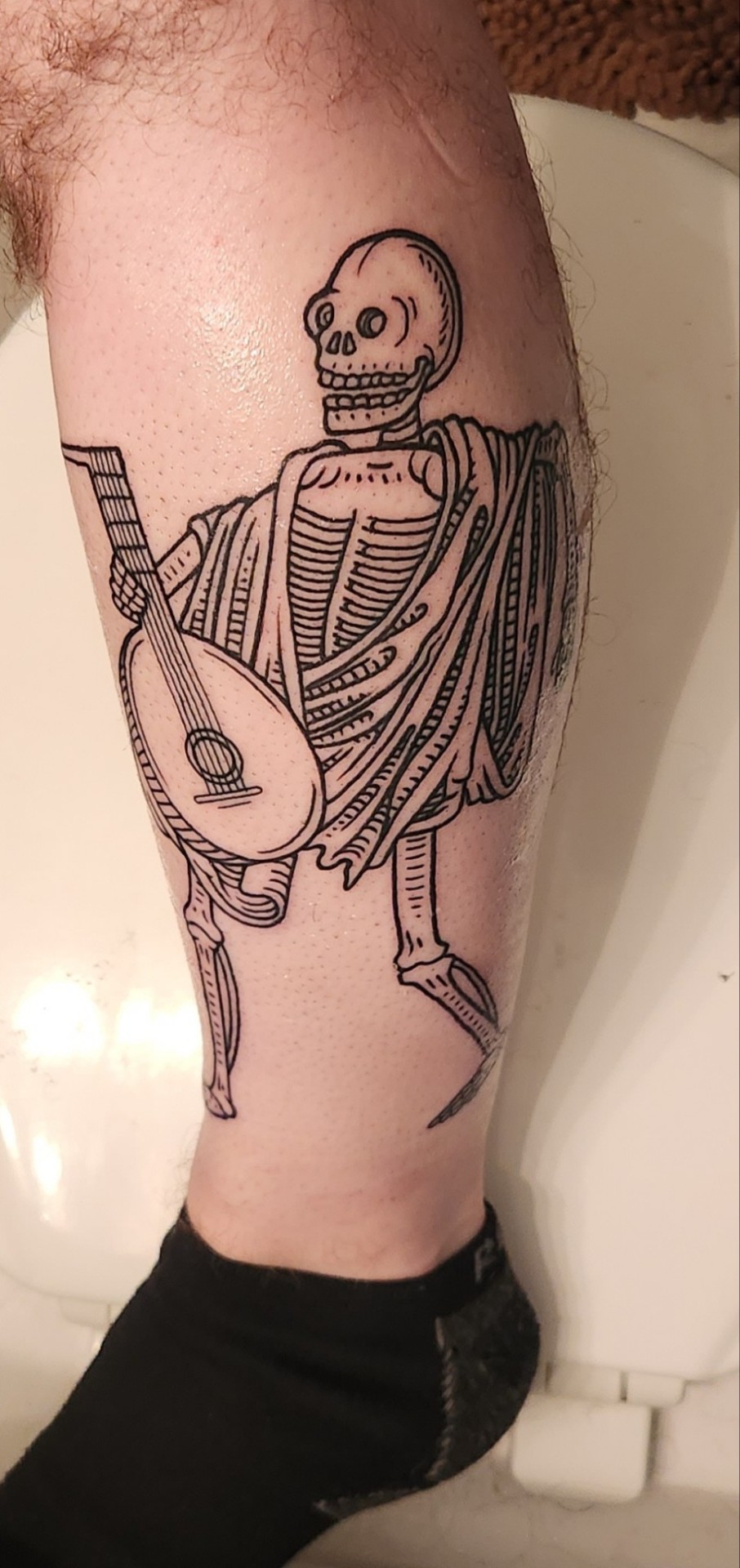
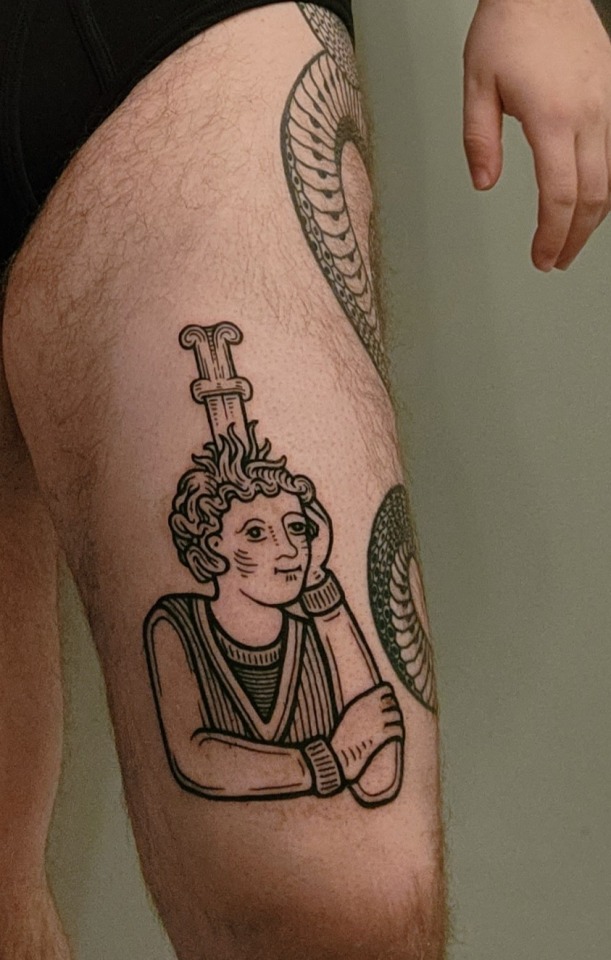
My funky new guys
#Yippeeeeeee#tattoos#both are from old manuscripts#the skeleton is from 1540 in germany#and the stabby guy is from the 1300s#its reinmar von brennenberg who was a medieval german poet
99 notes
·
View notes
Text

Folio 124 recto (Herr Walther von der Vogelweide), Codex Manesse
#manuscript#illuminated manuscript#codex manesse#liederhandschrift#poetry book#c: german#y: 1300s#l: middle high german#t: page#I RETURN. sorry for the extended silence i got stuck in a labyrinth that i had to wander in contemplation
86 notes
·
View notes
Text

Spiezer Chronicle p74, by Diebold Schilling. 1484-85
29 notes
·
View notes
Text
i was looking up tips for formatting bilingual books (for example, a copy of idk the iliad with ancient greek on one side, english translation on the other), but i didn’t know the word describing this kind of format 🤔
so i was stringing together keywords like “book with two languages” and one of the results was a reddit post with someone trying to find a book that alternates between multiple languages, i.e., there are no translations, it’s it’s one text, but half of the story is in english, then the other half, or interwoven throughout, is in french or whatever
and it took strength to not suggest the hussite trilogy 🥴
#the elbow-high diaries#i need to read it a second time for the more bg characters and the politics. and i need to read it a third time for the dante.#and im chewing away at manuscript discovered in a dragon’s cave rn and#im kind of torn between trying to read it quickly (learn the content) and trying to dissect sentences and spelling (learn some vocabulary)#so you could say im half of the time trying to pay attention to words and their spelling and learn them based on the translation given#and then i get caught somewhat off guard#im like ‘ok that spelling is… that’s not polish. what is this. german.’#‘okay got it. alright [moves down page] ok now he’s just speaking latin for fun now’#i’m not complaining to be clear i just find it funny because there’s so many damn references and weaving together of different#languages cultures literary traditions canons mythologies etc.#it reminds me when i had just started reading interviews with sapkowski#and before then i had just read season of storms and i was like ‘what is all this latin how pretentious is he’#and then i read the interviews and i was like oh. that’s just how he talks#when the intellectual regis randomly quotes cicero in lotl… i can see where that came from#also again to be clear i don’t think it makes one particularly uniquely intellectual to know and use multiple languages#i think its probably what the global norm is#but what makes it funny with andrzej sapkowski is that#as dandelion said about regis: ‘(he) was an intellectual. and liked to demonstrate it’#but i think this is what i like about his writing—particularly bc i never was especially close to anyone like this irl#though i think this is maybe for the best… sometimes… intellectuals are best read and not known 😬😅
8 notes
·
View notes
Text

Would you catch a grenade for me?
🥺
👉 👈
Image citation: Räbeln, Andreas. “Künst Büch Von Allerhandt Rahren Undt Schönen Inventionen so Wohl in Der Feuerwerckerey Künst Als Auch in Der Büchsenmeisterey Zusammen,” 1671. MS 20. Science History Institute. Philadelphia.
#fireworks#grenades#manuscripts#explosives#German manuscripts#bruno mars#cringe#history of science#16th century#othmeralia
6 notes
·
View notes
Photo
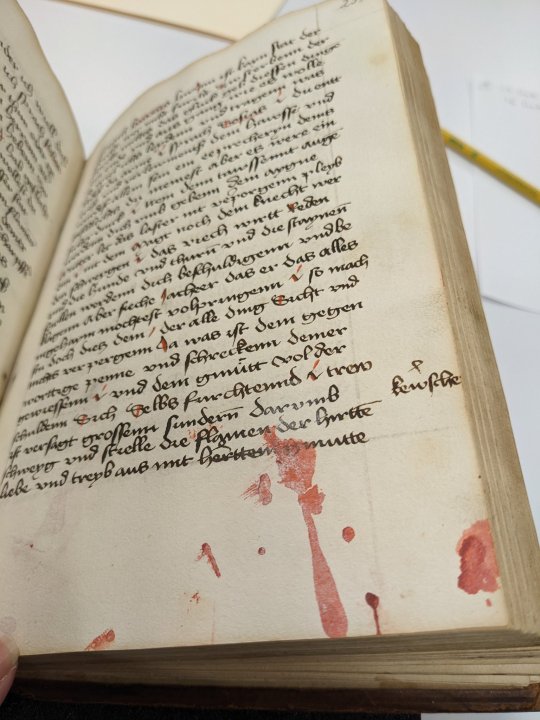
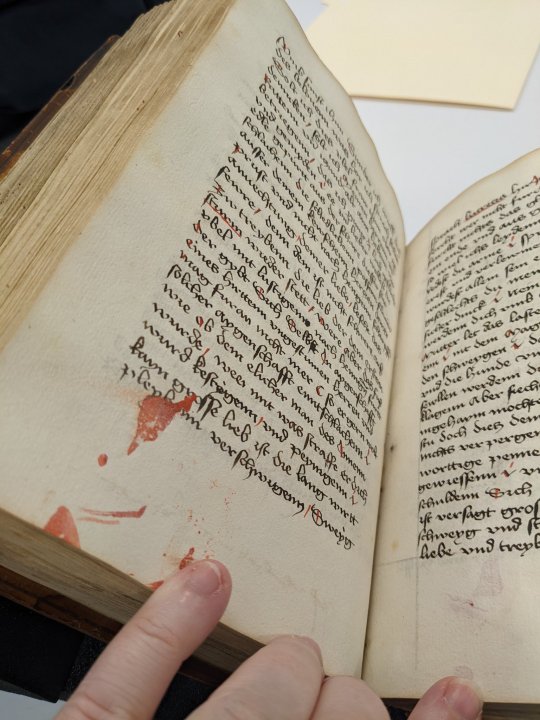
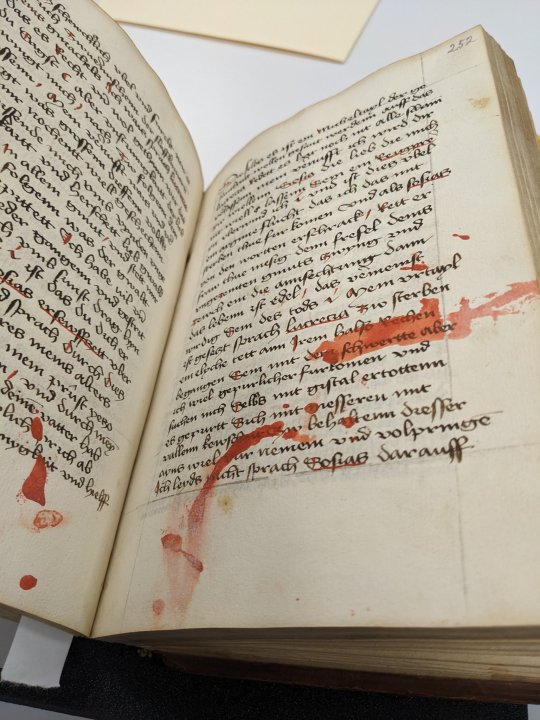
Oopsie! I’m 98% certain a cat was involved, somehow.
(UPenn Ms. Codex 1077)
249 notes
·
View notes
Text


Walther von Klingen
#walther von klingen#codex manesse#art#history#medieval#knights#knight#europe#european#middle ages#jousting tournament#joust#jousting#illuminated manuscript#chivalry#knighthood#german#swiss#thurgau#manuscript
219 notes
·
View notes
Text
Our fourth and penultimate #unboxing: a German calligraphy script book! (including an unfortunate slipcase) This book might have been used to illustrate the types of script available through a professional scriptorium. We'll digitize and catalog it as soon as we can!
224 notes
·
View notes
Text
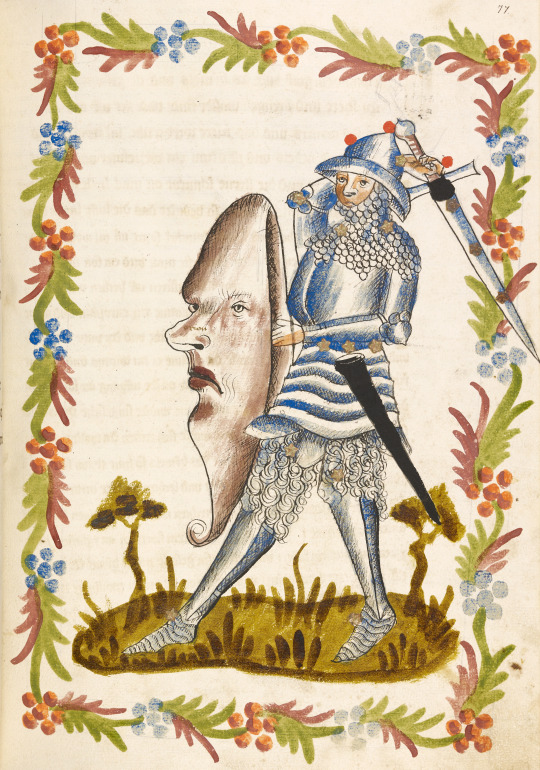
the constellation of orion depicted as a knight holding a sword and a grotesque shield
in an astrological-astronomical manuscript, germany, ca. 1445
source: Berlin, Staatsbibliothek, Ms. germ. fol. 244, fol. 77r
#the german word for this type of shield in medieval art is “fratzenschild” but i couldn't find much information on it online#or figure out if there's a better english word for it than grotesque shield#hmu if you know more about it!#orion#constellation#knight#sword#shield#grotesque shield#fratzenschild#illuminated manuscript#15th century#medieval astronomy
402 notes
·
View notes
Text
A special #Feathersday for #ChagPesachSameach: The Bird's Head Hagaddah c. 1300, the oldest surviving illuminated Ashkenazi Passover Haggadah, named for its depiction of Jewish human figures with bird heads. In this scene they're baking matzo!
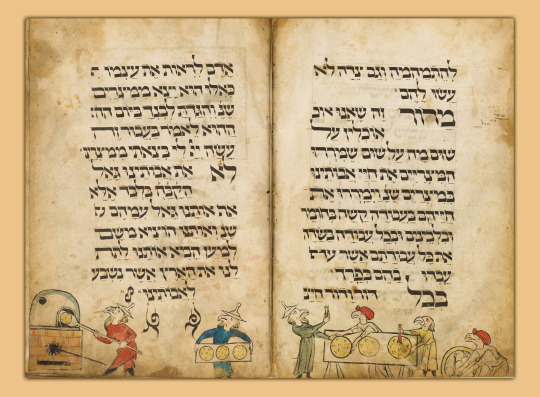


The Birds’ Head Haggadah
South Germany
c. 1300
Scribe: Menahem
Handwritten on parchment; dark brown ink & tempera; square Ashkenazic script
H: 27; W: 18.2 cm
Israel Museum, Jerusalem B46.04.0912
"The name of this early Passover Haggadah derives from its depiction of human figures with pronounced birds’ heads. The enigmatic practice of drawing bird and animal heads in place of human faces is found in other Ashkenazi manuscripts of the 13th and 14th centuries and has been interpreted in various ways.
This is the first illustrated Haggadah known to be produced as an entity separate from the prayer book. It contains depictions with ritual and textual themes: the preparation of matzah and the various blessings over wine and food recited during the Seder; biblical scenes like the gathering of the manna or the giving of the Torah; and messianic images such as the rebuilt Jerusalem."
#chag pesach sameach#Passover#Jewish holidays#Jewish art#Jewish manuscript#illuminated manuscript#medieval manuscript#medieval art#European art#14th century art#book art#matzo#chimera#bird#birds#birds in art#The Birds’ Head Haggadah#Haggadah#German art#Ashkenazi art#Ashkenazi Jewish#animal iconography#animals in art#works on paper
52 notes
·
View notes